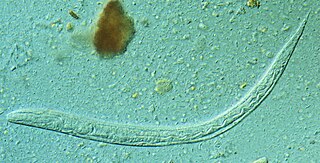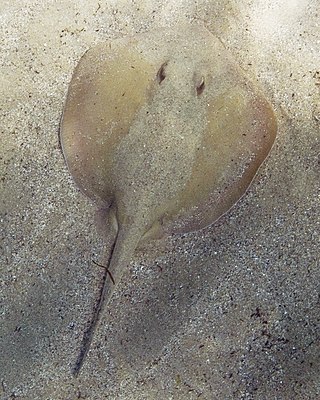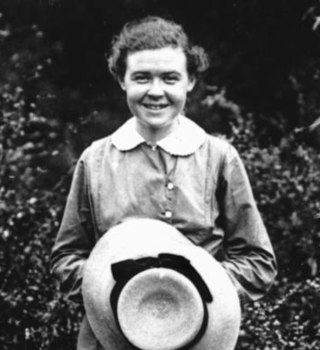
Strongyloides stercoralis is a human pathogenic parasitic roundworm causing the disease strongyloidiasis. Its common name in the US is threadworm. In the UK and Australia, however, the term threadworm can also refer to nematodes of the genus Enterobius, otherwise known as pinworms.

The tammar wallaby, also known as the dama wallaby or darma wallaby, is a small macropod native to South and Western Australia. Though its geographical range has been severely reduced since European colonisation, the tammar wallaby remains common within its reduced range and is listed as "Least Concern" by the International Union for Conservation of Nature (IUCN). It has been introduced to New Zealand and reintroduced to some areas of Australia where it had been previously extirpated. Skull variations differentiate between tammar wallabies from Western Australia, Kangaroo Island, and mainland South Australia, making them distinct population groups.

Gongylonema is a genus of thread-like nematode that was described by Molin in 1857. It is the only currently valid genus in the family Gongylonematidae, though the mysterious Spiruroides – usually placed in the Subuluridae, which are not closely related to Gongylonema among the Spiruria – might actually belong here. They are parasites of birds and mammals, transmitted by insects. Some 38 species are known, about 12 of which have been recorded in Europe.

Protemnodon is an extinct genus of megafaunal macropodids that existed in Australia, Tasmania, and New Guinea in the Pliocene and Pleistocene. Members of this genus are also called giant kangaroos.

The common stingaree is a species of stingray in the family Urolophidae. The most abundant ray in inshore waters off eastern Australia, it generally inhabits estuaries, sandy flats, and rocky reefs from the shore to a depth of 60 m (200 ft). This plain brownish to grayish species has a rounded pectoral fin disc with a broadly triangular snout. Its nostrils have enlarged lobes on their outer margins and a skirt-shaped curtain of skin with a fringed posterior margin between them. Its tail bears a small dorsal fin before the stinging spine, and terminates in a leaf-shaped caudal fin. This ray can grow to 52 cm (20 in) long.

Nematology is the scientific discipline concerned with the study of nematodes, or roundworms. Although nematological investigation dates back to the days of Aristotle or even earlier, nematology as an independent discipline has its recognizable beginnings in the mid to late 19th century.

The nematodes, roundworms or eelworms constitute the phylum Nematoda. They are a diverse animal phylum inhabiting a broad range of environments. Most species are free-living, feeding on microorganisms, but there are many that are parasitic. The parasitic worms (helminths) are the cause of soil-transmitted helminthiases.

Mabel Josephine (Jo) Mackerras was an Australian zoologist, entomologist and parasitologist. Her research and life's work contributed to entomology, veterinary medicine and medical science. Throughout her life she held a wide range of positions and duties that included Army medical officer, entomologist, medical scientist, and parasitologist. Mackerras was a major during WWII and served in the Army Malaria Research Unit. In an application for King's Birthday Honours her work earned the citation,: "few women can have made a greater contribution to the Allied war effort".
Pasteuria is a genus of mycelial and endospore-forming, nonmotile gram-positive bacteria that are obligate parasites of some nematodes and crustaceans. The genus of Pasteuria was previously classified within the family Alicyclobacillaceae, but has since been moved to the family Pasteuriaceae.

Thomas Harvey Johnston was an Australian biologist and parasitologist. He championed the efforts to eradicate the invasive prickly pear.

Odilia is a genus of nematode worms established by Marie-Claude Durette-Desset in 1973 that infect mostly murid rodents of the Australasian region (species of Melomys, Rattus and Uromys from mainland Australia and Tasmania.
Cloacina is a genus of parasitic nematodes in the family Chabertiidae. Species are parasites of marsupials in Australia.
Cloacina elegans is a species of parasitic nematodes in the family Chabertiidae. Members of the species are parasites of marsupials in Australia.

Cucullanus is a genus of parasitic nematodes. The genus includes more than 100 species.
Cyclostrongylus elegans is a species of oesophageal parasitic nematodes of macropodid marsupials in Australia.

Harrison's rule is an observation in evolutionary biology by Launcelot Harrison which states that in comparisons across closely related species, host and parasite body sizes tend to covary positively.

František Moravec is a Czech parasitologist who specialises on the Nematodes, especially the nematodes parasites of fishes. His research is mainly in the field of taxonomy of the Nematoda.

Ascarophis is a genus of parasitic nematodes, belonging to the family Cystidicolidae. Species of Ascarophis are parasitic as adults in the gastrointestinal tract of marine and estuarine fishes.
Australiformis is a monotypic genus of acanthocephalans containing a single species, Australiformis semoni, that infests marsupials in Australia and New Guinea. Its body consists of a proboscis armed with hooks which it uses to pierce and hold the gut wall of its host, and a long trunk. This genus resembles species in the genus Moniliformis but is characterized by a lack of spiral muscles in the outer wall of the proboscis receptacle. The proboscis is armed with 12 rows of 13 to 15 hooks which are used to attach themselves to the small or large intestines of the host. The female worms range from 95 to 197 millimetres long, virtually all of which is the trunk, and 1.75 to 3.5 millimetres wide. There is pronounced sexual dimorphism in this species as females are around twice the size of the males whose trunks range from 46 to 80 millimetres long and 2 millimetres (0.079 in) wide. Infestation by A. semoni may cause debilitating inflammation of the stomach (gastritis) with granulomatous ulcers.
Ophidascaris robertsi is a nematode usually parasitic in the carpet python. It is found in Australia and Papua New Guinea. Pythons serve as the typical hosts for Ophidascaris robertsi, which has an indirect life cycle. The adult parasites develop nodular masses in the oesophagus and stomach of carpet pythons and place a small piece of their anterior bodies into the nodules that protrude from the digestive mucosa. When endemic parasites like Ophidascaris robertsi infect local fauna, the pathological changes that follow are frequently self-limiting or do not result in illness.












